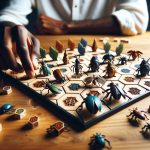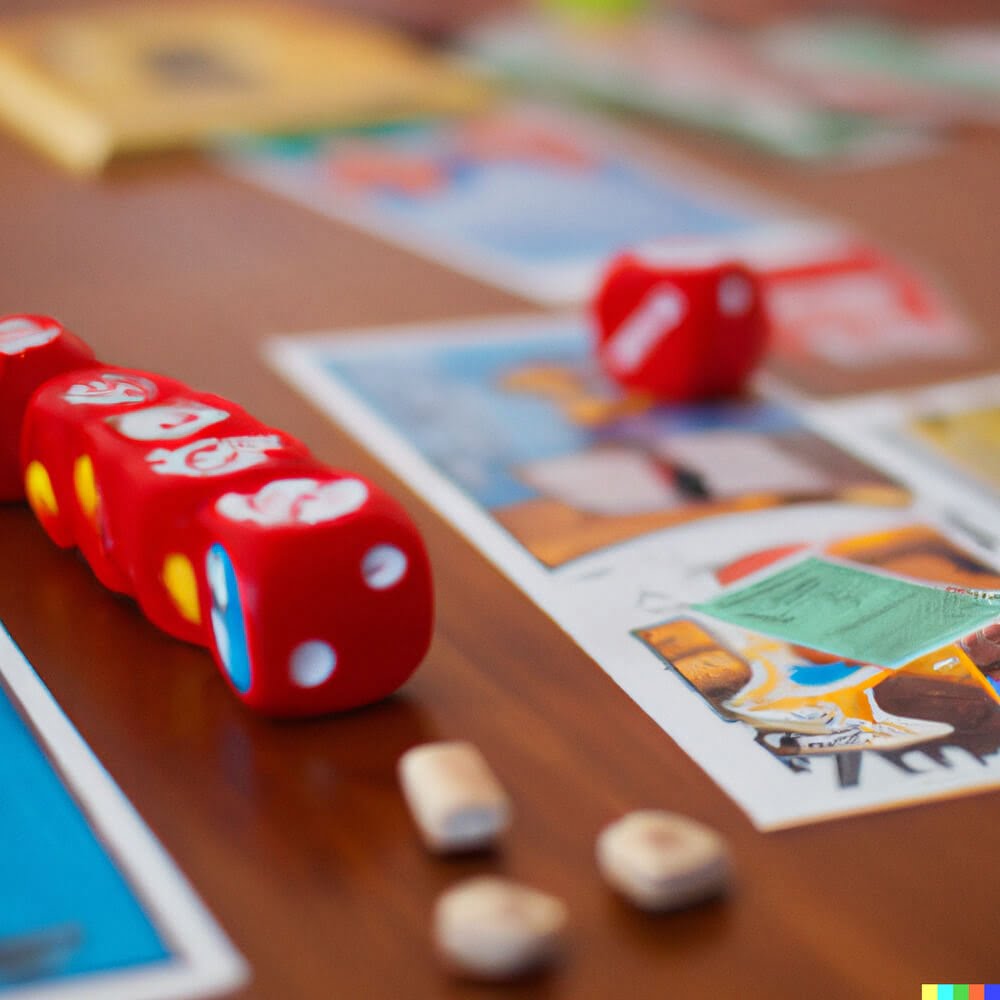Are you ready to master the art of strategic insect warfare? In this Hive Board Game Strategy Guide, we will delve into the world of Hive, a chess-like abstract strategy game that has captured the minds of players around the globe. From understanding the unique abilities of each insect piece to developing advanced tactics for victory, this guide will provide you with the knowledge and skills needed to become a formidable player in the Hive community.
The Hive board game is a two-player tabletop game that was created by John Yianni in 2001. Its simple yet elegant design has made it a favorite among board game enthusiasts who enjoy strategic gameplay. With only a handful of unique insect pieces and no game board required, Hive offers an immersive and intense gaming experience like no other.
Before diving into advanced strategies and tactics, it’s important to have a solid understanding of the game’s components and setup. The pieces in Hive consist of various insects such as ants, grasshoppers, beetles, spiders, and the all-important queen bee. Each insect has its own special abilities which can be utilized to control the board and outmaneuver your opponent.
Understanding these pieces and how they interact with each other is crucial for developing effective gameplay strategies. Get ready to explore this fascinating world as we take you through this comprehensive strategy guide for the Hive board game.
Understanding the Hive Board Game Pieces
The Hive board game features several types of insect pieces, each with its unique abilities and strategic advantages. Understanding how to use these pieces effectively is crucial for developing a winning strategy. Here’s a breakdown of the different types of insects and some tips on how to utilize them strategically:
- The Queen Bee: This piece is the most important in the game, as protecting it is necessary to avoid losing. Keeping the queen mobile and surrounded by friendly pieces allows for flexibility and adaptability during gameplay.
- Grasshopper: The grasshopper has a unique jumping ability that allows it to leap over other pieces, making it an excellent tool for disrupting the opponent’s strategy or creating new opportunities for your pieces.
- Beetle: The beetle can crawl on top of other pieces, effectively acting as a “blocker” while also maintaining mobility. Using the beetle to immobilize key enemy insects can be a game-changing maneuver.
- Spider: The spider can move exactly three spaces around the edge of the hive in a single turn. Utilizing this mobility to quickly maneuver into strategic positions can help control key areas of the board.
- Ant: The ant is able to crawl around a large section of the board throughout the game, making it an essential piece for establishing strong connections between different parts of your army.
Knowing how to use each insect type strategically and understanding their unique movement abilities is fundamental for success in Hive. By incorporating these tips into your gameplay, you can develop effective strategies based on leveraging each insect’s strengths while countering your opponent’s moves.
Basic Rules and Gameplay Mechanics
The Hive board game is a strategic two-player game that has gained popularity for its unique gameplay and intricate strategies. The game consists of a variety of insect pieces, each with its own special abilities, and the objective is to surround your opponent’s queen bee while protecting your own. Before diving into the specific strategies and tactics, it’s crucial to understand the basic rules and gameplay mechanics of Hive.
The game starts with both players taking turns to either place a new insect piece or move an existing one on the board. Each insect has a specific way it can move, such as the ability of the beetle to climb on top of other pieces or the grasshopper’s ability to jump over other pieces. The objective is to completely surround the opponent’s queen bee while maintaining mobility for your own pieces.
One important rule to keep in mind is that no piece can be moved if it would result in breaking the hive into more than two separate connected groups. This rule plays a significant role in positioning and maneuvering your pieces effectively on the board.
Understanding these basic rules and gameplay mechanics sets the foundation for developing effective strategies in Hive. By mastering these fundamental concepts, players can then progress to applying advanced tactics and techniques to outmaneuver their opponents and secure victory.
Essential Strategies for Beginners
As a beginner to the Hive board game, it’s essential to develop a strong opening strategy to set the stage for a successful gameplay. One of the key tactics is to prioritize placing your Queen Bee on the board while simultaneously blocking your opponent from doing so.
This ensures that you maintain control of the game and limit your opponent’s options right from the start. Additionally, strategically positioning your other pieces around the Queen Bee can help protect her and create opportunities for future moves.
Efficiently maneuvering your pieces on the board is another crucial aspect of beginner strategy in the Hive board game. It’s important to consider not only your own moves but also anticipate your opponent’s potential actions.
By maintaining flexibility with your insect pieces and keeping them mobile, you can adapt to changing circumstances and capitalize on opportunities as they arise. Furthermore, being mindful of creating interconnected chains of insects can provide you with powerful positional advantages and increase your options for future turns.
Lastly, maintaining a balance between offensive and defensive strategies is key for beginners in the Hive board game. Understanding when to assert pressure on your opponent and when to fortify your own position is vital for success. By developing a nuanced approach that combines proactive aggression with prudent defenses, you can effectively control the flow of the game and put yourself in a favorable position to secure victory.
| Strategy | Advantages |
|---|---|
| Strong opening strategy | Securing control of the game from the start |
| Efficient maneuvering of pieces | Adaptability and increased positional advantages |
| Balance between offensive and defensive strategies | Control over the flow of the game and increased chances of winning |
Advanced Tactics and Techniques
Countering Opponent’s Moves
Once you have a good grasp of the basic strategies and tactics in Hive, it’s essential to start thinking about how to counter your opponent’s moves effectively. One key aspect of countering is to pay close attention to the positioning of your opponent’s pieces and anticipate their next moves.
By identifying their potential strategies, you can proactively position your own pieces to block or disrupt their plans. Additionally, maintaining a strong defensive position while also developing your offensive threats can put pressure on your opponent and limit their options.
Planning Ahead
Another advanced technique in Hive is the ability to think several moves ahead. As the game progresses, it becomes crucial to consider not just your current move, but also its impact on future turns. Look for opportunities to create multiple threat paths that force your opponent into difficult decisions, as well as ways to create flexibility in your own formations. By planning ahead, you can maintain control of the board and adapt to changing circumstances more effectively.
Mastering Piece Combinations
In Hive, understanding how different insects work together is essential for success. Each insect has unique abilities that can synergize with other pieces when used strategically. For example, the Grasshopper can jump over other pieces, creating unexpected threats or opening up new offensive possibilities when combined with other insects.
Learning how to combine these abilities effectively will expand your tactical options and allow you to respond adaptably to various situations on the board. In addition, mastering piece combinations also involves anticipating how your opponent might use their own insects together and planning accordingly.
Hive Board Game Strategy Guide for Each Insect
Ant
The Ant is the most versatile insect in the game, as it can move to any adjacent space around the Hive. It is crucial to use your Ants strategically to create pathways and block off your opponent’s moves. One effective strategy is to use your Ants to surround your opponent’s Queen Bee, limiting its movement options.
Beetle
The Beetle has the unique ability to climb on top of other insects, effectively immobilizing them. Utilize this ability to block off your opponent’s powerful pieces or to secure control over strategic positions on the board. Keep in mind that a Beetle on top of another piece is considered part of the Hive, so take advantage of this mechanic to establish dominance on the board.
Grasshopper
The Grasshopper has a powerful jumping ability that allows it to leap over adjacent pieces, landing in the next open space. Use this mobility to quickly position your Grasshoppers in key locations or surprise your opponent with unexpected jumps across the board. Be mindful of potential counter-moves from your opponent and plan ahead when deploying your Grasshoppers.
By understanding the unique abilities and strategic potential of each insect piece in Hive, players can develop more nuanced and effective gameplay tactics. Combining these insights with overall board control and strategic planning will contribute significantly to a player’s success in mastering the game. As you continue honing your skills and exploring new combinations, don’t be afraid to experiment and adapt these strategies based on evolving game situations and opponents’ moves.
Common Mistakes to Avoid
When playing Hive, it’s easy for beginners to fall into common traps that can hinder their progress in the game. By recognizing these mistakes and learning how to avoid them, players can improve their gameplay and become more strategic in their approach. Here are some of the most common mistakes to watch out for:
1. Failing to prioritize the Queen Bee: One of the most common mistakes beginners make is neglecting the importance of protecting their Queen Bee. The Queen Bee is a crucial piece in Hive, as losing it results in an automatic defeat. Therefore, players should prioritize keeping their Queen surrounded and safe from being surrounded by the opponent’s pieces.
2. Overcommitting early on: Another mistake often seen in new players is overcommitting pieces too early in the game. While it may be tempting to quickly get all your pieces onto the board, doing so without a clear strategy can leave you vulnerable to counterattacks from your opponent. Instead, focus on creating a strong foundation with strategic placements before committing all your insects.
3. Underestimating the value of blocking moves: Blocking moves are essential in Hive, as they prevent your opponent from freely maneuvering their insects and give you control over key areas of the board. Beginners may overlook the importance of these moves and miss opportunities to limit their opponent’s options, ultimately putting themselves at a disadvantage.
By avoiding these common mistakes and staying mindful of them during gameplay, players can enhance their overall strategy and decision-making in Hive. Keeping these pitfalls in mind will help aspiring players develop a more calculated and thoughtful approach to the game.
Advanced Strategy
The Special Beetle Move in the Hive board game is a powerful tactic that can give players a significant advantage when utilized effectively. The beetle piece, with its ability to move on top of the other insects and immobilize them, can be a game-changer in strategic gameplay. In this section, we will delve into the details of this advanced strategy and provide tips on how to maximize the potential of the beetle piece.
Understanding the movement capabilities of the beetle is crucial in executing this advanced strategy. The beetle is the only insect that can move on top of the hive, allowing it to immobilize an opponent’s insect by occupying its space.
This unique ability can be used to block key pieces or disrupt your opponent’s plans, creating opportunities for you to gain control of the game. It is important to identify which insects are prime targets for immobilization and plan your moves accordingly.
To fully leverage the Special Beetle Move, players must also consider positioning and timing. Deploying the beetle at the right moment and in a strategic location can have a significant impact on the game. Additionally, understanding when to use this tactic defensively or offensively is essential for success. By mastering these nuances, players can enhance their overall gameplay and increase their chances of securing victory.
As with any advanced strategy in Hive, practice and experience are essential for mastery. Incorporating the Special Beetle Move into your gameplay repertoire may take time to perfect, but patience and persistence will ultimately lead to improved performance on the board. By honing this tactic and learning from each game experience, players can elevate their skills and become formidable contenders in Hive board game competitions.
Conclusion
In conclusion, the Hive Board Game Strategy Guide provides a comprehensive overview of the game, from understanding the pieces and basic rules to advanced tactics and strategies. By delving into the unique abilities of each insect piece and providing tips for using them strategically, this guide equips both beginners and experienced players with the knowledge to elevate their gameplay.
As players familiarize themselves with the intricacies of the game, they can develop strong opening strategies and efficiently maneuver their pieces on the board. The guide also delves into more advanced techniques, such as countering opponents’ moves and planning ahead, allowing players to level up their gameplay and anticipate their opponents’ next moves.
With an in-depth analysis of each insect piece and best practices for combining them effectively, players are empowered to experiment with different combinations and discover winning strategies. Ultimately, the Hive Board Game Strategy Guide serves as a valuable resource for honing skills and exploring new tactics to master the game. Whether you’re a beginner or a seasoned player, there’s always room for improvement and growth in mastering this intricate and engaging game.
In summary, this strategy guide emphasizes that success in Hive is not just about mastering individual pieces; it’s about developing a deep understanding of how they interact with one another. By avoiding common mistakes, leveraging advanced strategies like the special beetle move, and continually refining your approach to gameplay, you can unlock new levels of mastery in this captivating board game.
Keep playing, keep learning, and keep challenging yourself – after all, that’s what makes Hive such a timeless classic.
Frequently Asked Questions
What Is the Best Strategy to Win at Hive?
The best strategy to win at Hive involves careful planning and anticipating your opponent’s moves. It’s important to maintain control of the board and strategically place your pieces to block your opponent while keeping your own pieces mobile.
How Long Does a Game of Hive Take?
A game of Hive can vary in length depending on the skill level of the players and their familiarity with the game. On average, a game can take anywhere from 20 minutes to an hour to complete. Quick, decisive moves can shorten the game, while more cautious, strategic gameplay may extend it.
Is Hive Board Game Good?
Whether or not Hive is a good board game depends on individual preferences. Many people enjoy the game for its strategic depth, portability, and simple rules that make it easy to learn but challenging to master.
Its unique hexagonal pieces and no-board design also set it apart from traditional board games, making it a good choice for players looking for something different from the usual fare.

I love playing all kinds of games – from classics like Monopoly to modern favourites like Ticket to Ride.
I created this blog as a way to share my love of board games with others, and provide information on the latest releases and news in the industry.





